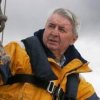On-going efforts by fishermen to reduce their environmental impact, increase their efficiency and contribute to scientific data collection are continuing to enhance the sustainability credentials of seafood, Killybegs Fishermen’s Organisation has claimed.
The major Donegal-based fishing group is also looking for “ways and means of weaning the vessels off diesel.”
“While the fishing industry sometimes struggles to get the recognition it deserves for its importance to the Irish economy or as producers of highly nutritious low impact food, this is proof positive of the sustained work which KFO members are investing into long-term sustainability,” the Organisation’s Chief Scientific and Sustainability Officer, Dr Edward Farrell, has said
A report commissioned by the State’s seafood development agency, Bord Iascaigh Mhara (BIM), earlier this year, to which the KFO had significant input, found that carbon emissions for the sector are less than 2% of those produced in other key food sectors. It also stated that the carbon footprint of small pelagic species, such as mackerel and herring, is a mere fraction of land-based animal protein production.
“The KFO participated in a ground-breaking project called NEPTUNUS, the primary objective of which was to develop a life-cycle inventory database of seafood for the Atlantic Area. In addition to analysing fuel use and catch, the project has provided a carbon footprint for pelagic species, which reflects very positively on the industry here,” according to Dr Farrell. “Killybegs’ proximity to the main fishing grounds and our vessels' seasonal, targeted and selective fishing approach distinguishes them from foreign fleets landing the same species.
“While fuel accounts for the majority of the industry’s emissions, it is important to put this into context and look at the return on that energy investment, which in the case of small pelagic species was considerably higher than for land-based animal protein production.
Dr Farrell also revealed that the KFO is looking for alternatives to diesel as the fuel for its fleet: “We are probing ways and means of weaning the vessels off diesel. The KFO is working with several interested parties and research groups to explore the options, potential and realities of decarbonisation and the energy transition for our members’ vessels. As an industry wholly reliant on natural ecosystems for sustainable food production, the KFO is fully committed to sustainable fishing and ongoing reduction of its carbon footprint. “






























































